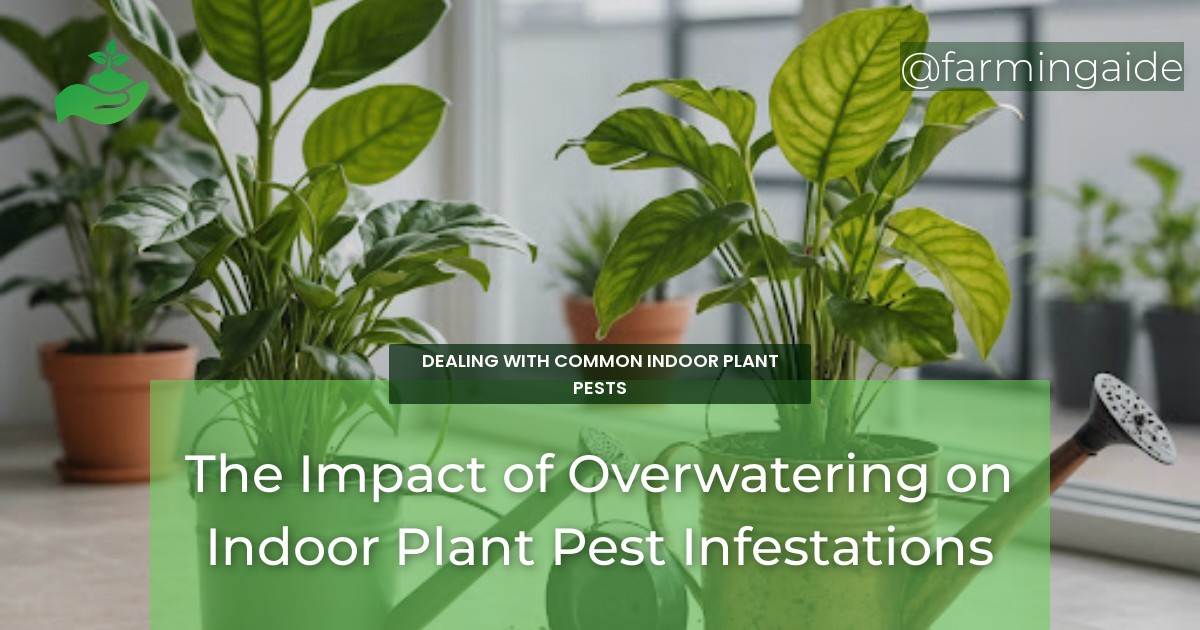As an indoor plant enthusiast, you’re likely no stranger to the joys of nurturing your green friends. However, even the most well-intentioned plant parents can fall victim to one of the most common mistakes in indoor gardening: overwatering. While it may seem harmless, overwatering can have devastating consequences, including the attraction of unwanted pests. In this article, we’ll delve into the impact of overwatering on indoor plant pest infestations, exploring the signs and causes of overwatering, the link between overwatering and pest infestations, and most importantly, how to prevent and manage these issues to maintain healthy, thriving plants.
Key Takeaways
- Overwatering can attract pests and lead to infestations.
- Identifying signs of overwatering is crucial in preventing pest infestations.
- Proper watering techniques and soil selection can help prevent overwatering.
- Natural pest control methods can be effective in managing infestations.
- Preventing overwatering is key to maintaining healthy, pest-free plants.
Understanding Overwatering
Overwatering is a common mistake that can have far-reaching consequences for your indoor plants. When the soil is consistently waterlogged, it can lead to root rot, reducing the plant’s ability to absorb essential nutrients. This, in turn, can cause a range of problems, from yellowing leaves to stunted growth. Moreover, overwatering creates an ideal environment for pests to thrive, making it essential to recognize the signs of overwatering and take prompt action.
Signs of Overwatering
Identifying the signs of overwatering is crucial in preventing pest infestations. Some common signs include:
- Yellowing or droopy leaves
- Soft, mushy stems
- Water pooling around the base of the plant
- Foul odor from the soil
Common Causes of Overwatering
So, what leads to overwatering? Some common causes include:
- Inadequate drainage in the pot
- Watering too frequently
- Using the wrong type of potting soil
- Ignoring the plant’s watering needs
The Link Between Overwatering and Pest Infestations
Overwatering creates an ideal environment for pests to thrive. When the soil is consistently waterlogged, it attracts pests that feed on the excess moisture and nutrients. This, in turn, can lead to pest infestations, which can further weaken the plant and create a vicious cycle.
ALSO READ
How Overwatering Attracts Pests
Overwatering attracts pests in several ways:
- Excess moisture creates an ideal breeding ground for pests.
- Waterlogged soil reduces the plant’s ability to absorb nutrients, making it more susceptible to pest damage.
- Overwatering can lead to root rot, creating an entry point for pests.
Types of Pests Caused by Overwatering
Some common pests attracted to overwatered plants include:
- Fungus gnats
- Spider mites
- Mealybugs
- Aphids
Preventing Overwatering
Preventing overwatering is crucial in maintaining healthy, pest-free plants. Here are some tips to help you get started:
ALSO READ
Proper Watering Techniques
Avoid watering on a schedule and instead, check the soil moisture by sticking your finger into the soil up to the knuckle. Water only when the soil feels dry to the touch.
Soil and Pot Selection for Drainage
Choose pots with good drainage holes to prevent water from accumulating in the soil. Select potting soil that drains excess water quickly, reducing the risk of waterlogging.
Managing Pest Infestations
If you’ve identified a pest infestation, don’t panic! Here are some tips to help you manage the issue:
Natural Pest Control Methods
Try these natural pest control methods:
- Neem oil
- Insecticidal soap
- Horticultural oil
When to Seek Professional Help
If the infestation is severe or you’re unsure how to manage it, consider seeking professional help from a gardening expert or pest control service.
Conclusion: Maintaining Healthy Indoor Plants
In conclusion, overwatering can have devastating consequences for your indoor plants, including the attraction of unwanted pests. By recognizing the signs of overwatering, understanding its causes, and taking preventative measures, you can maintain healthy, thriving plants. Remember, a little care and attention can go a long way in keeping your plants happy and pest-free.
Recap of Key Points
Here’s a quick recap of the key points:
- Overwatering attracts pests and leads to infestations.
- Identifying signs of overwatering is crucial in preventing pest infestations.
- Proper watering techniques and soil selection can help prevent overwatering.
- Natural pest control methods can be effective in managing infestations.
Long-term Care Tips for Indoor Plants
Here are some long-term care tips to keep your indoor plants thriving:
- Monitor soil moisture regularly.
- Adjust your watering schedule according to the season.
- Fertilize your plants regularly.
- Prune your plants to maintain their shape and promote healthy growth.


